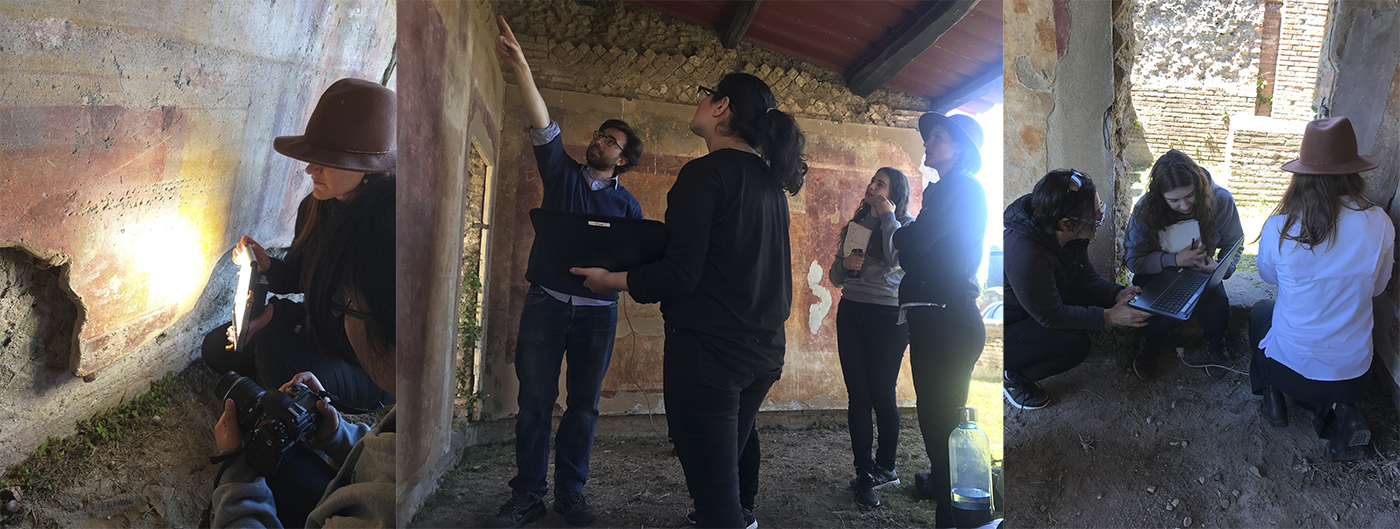Investigating a lost blue pigment, fostering inclusive digital learning environments, and designing an environmentally conscious city are just a few of the topics that Pratt Institute faculty, students, and staff are examining in year-round research happening on campus and across the globe. The 2021 Pratt Research Open House (ROH) launches this week to showcase those initiatives and many more with over 50 projects available to explore online. Organized by the Office of Research and Strategic Partnerships in the Provost’s Office, it is the fourth edition of the annual event and the second to take place online.
“This past year has been a year like none other, one that has led to unprecedented health, work, and life challenges,” said Dr. Allison Druin, associate provost for research and strategic partnerships. “Despite it all, Pratt researchers have continued their research energies in examining the past, developing creative new possibilities, and looking at what is possible for the future.”
The virtual ROH features image, text, and video presentations by students, faculty, staff, and alumni covering a range of areas with a global perspective such as sustainability, conservation, and preservation of heritage. This dynamic work reflects ongoing initiatives to promote research at Pratt, like the recently completed renovations at Pratt Manhattan to add new design labs. Many of this year’s ROH projects also involve collaboration beyond campus with local industry, government groups, and other educational institutions. There are spotlights on the progress of previous ROH projects such as the Pollinators Pavilion led by Ariane Lourie Harrison, visiting associate professor in Graduate Architecture and Urban Design (GAUD), which won the ROH Sustainability Award in 2020 and was recently honored at the 2021 AIA New York Design Awards.
“We’re excited to share the wide range of projects in schools across the Institute, from those that are rooted in their disciplines and practice, as well as those that bridge multiple research disciplines and include many people from various schools at Pratt,” said Kathryn Kelly, manager of research and strategic partnerships.
“The Search for Egyptian Blue” led by Professor of Math and Science Eleonora Del Federico, Katelin Fallon, MS HAD ’13, and Adelaide Steinfeld, BA HAD ’20, is uncovering how the oldest known synthetic blue pigment—first prepared by ancient Egyptians around 2800 BCE—mysteriously vanished around the 3rd century CE. Their research on this disappearance includes a thorough on-the-ground analysis of pigments on wall paintings at Ostia Antica, an ancient Roman harbor city in Italy, to better understand how this once ubiquitous blue faded from use.
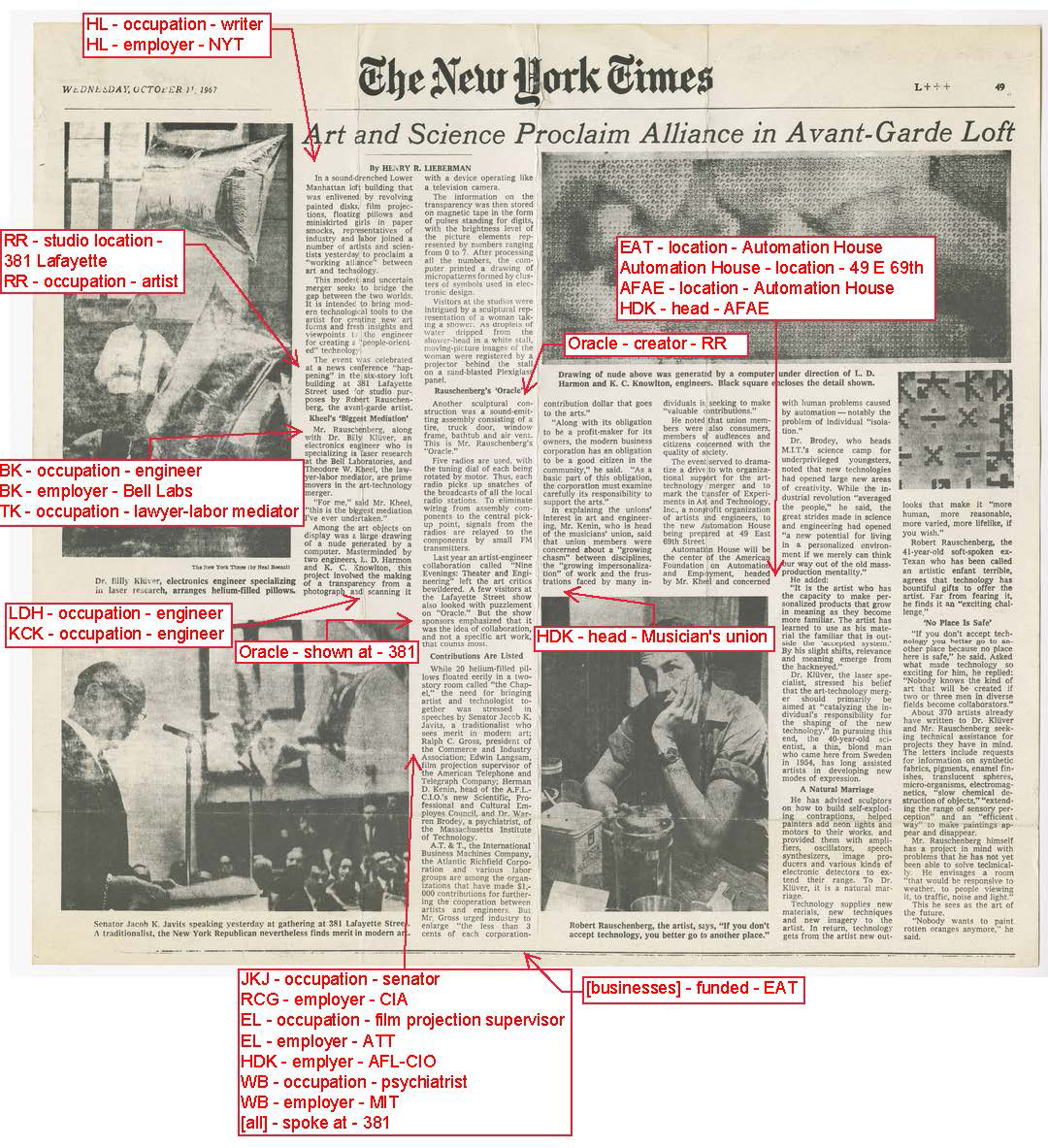
Material from the Semantic Lab at Pratt’s “E.A.T. Project”
Researchers in the School of Information are investigating heritage related to art of the 20th century, with the“Semantic Lab’s E.A.T. Project” using primary sources from the Robert Rauschenberg Foundation to create a repository of information and linked data on Experiments in Art and Technology (E.A.T.). Established in 1966by Rauschenberg with research scientist Billy Klüver of Bell Laboratories, artist Robert Whitman, and engineer Fred Waldhauer, E.A.T. strived to make technology accessible to artists and encouraged interdisciplinary collaborations between artists and engineers. Led by Professor Cristina Pattuelli and Adjunct Assistant Professor Matthew Miller, the “E.A.T. Project” at Pratt traces the web of relationships that were part of this groundbreaking initiative, using data from photographs, notebooks, videos, posters, and newspaper clippings.
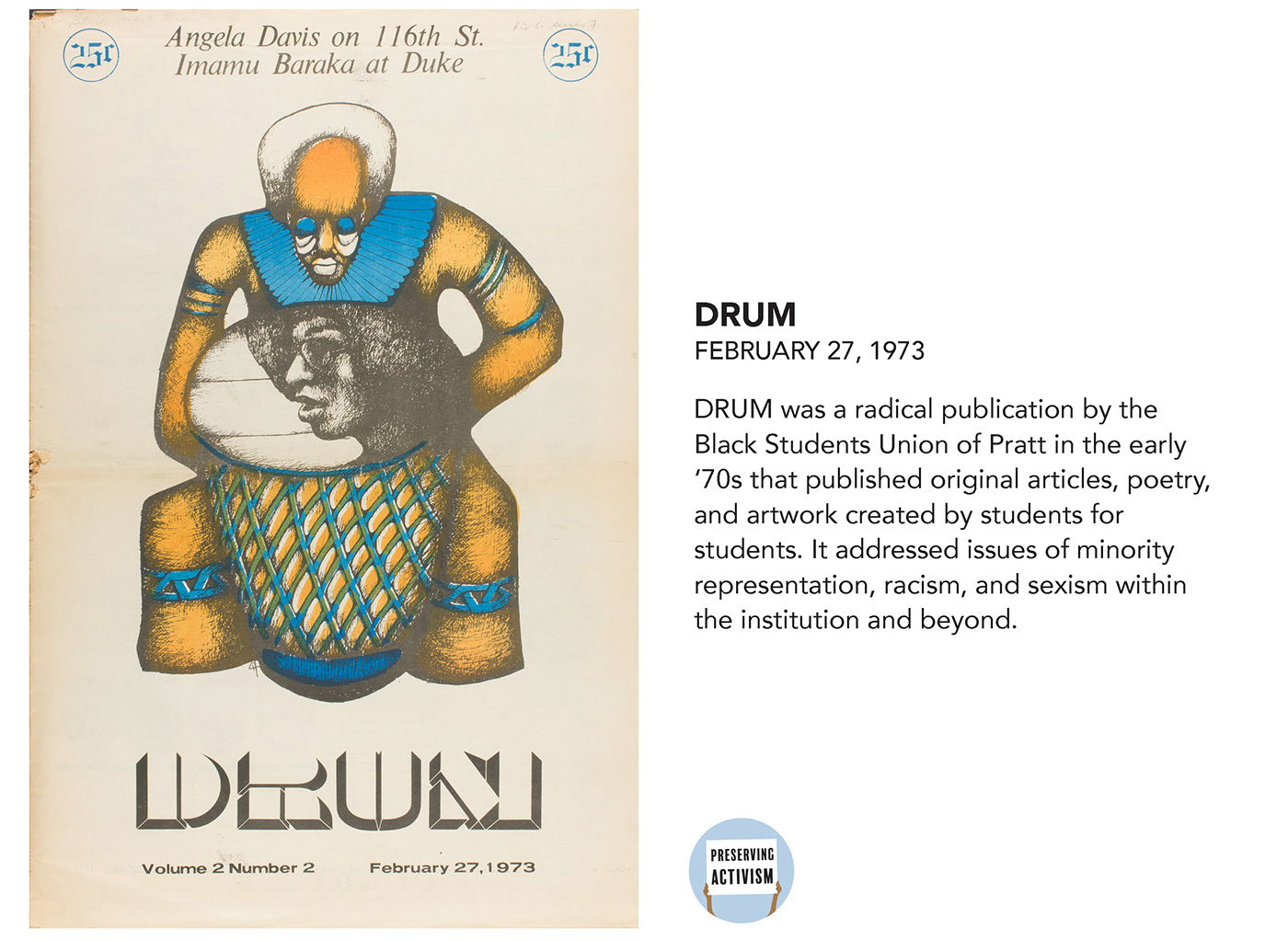
An issue of DRUM published by the Black Student Union of Pratt in the early 1970s from “Preserving Activism”
A cross-campus team is looking at Pratt’s own history through archival material in “Preserving Activism.”Involving faculty, students, and staff from the School of Design, School of Architecture, and Pratt Libraries, the project highlights 20th-century activism at Pratt by developing a collection of oral histories, texts, and ephemera that will become part of the Pratt Archives. A focus has been on how women and BIPOC have led the fight against inequality on campus, such as an examination of Black student activism in the 1970s and how it relates to advocacy on campus today.
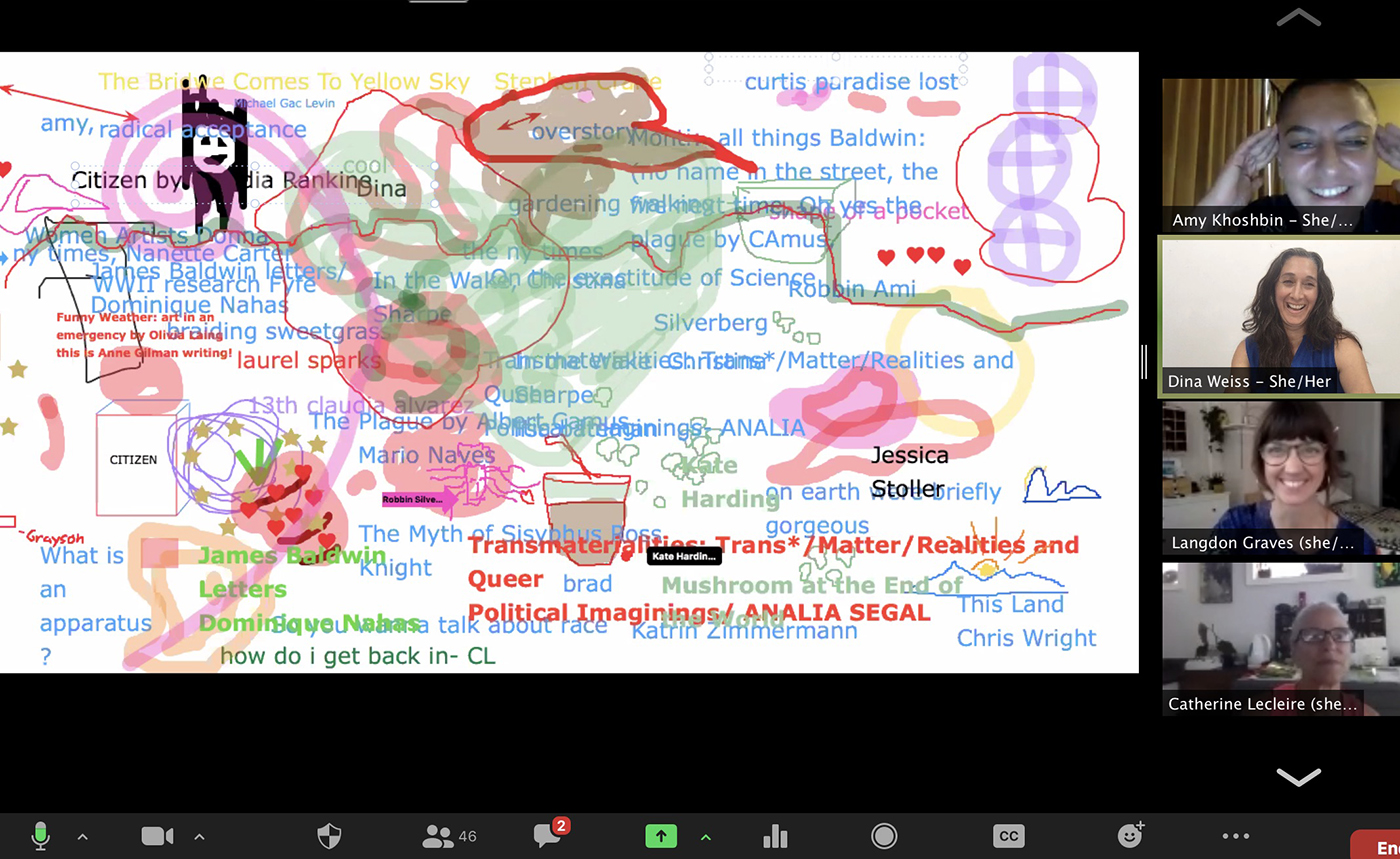
Online collaboration from the “Community in Action: Fine Arts Faculty Forum”
Fostering an inclusive and engaging learning environment for the new landscape of digital teaching has been central to the “Community in Action: Fine Arts Faculty Forum” led by Assistant Chair of Fine Arts Dina Weiss, Visiting Assistant Professor Langdon Graves, and Amy Khoshbin, fine arts civic engagement fellow. Taking place over six months with support from the Center for Teaching and Learning, the initiative brought faculty together to prepare for the fall of 2020 with a focus on extending the successes of new virtual models—where the traditional hierarchy of the classroom is disrupted—into a sustained and strong intersectional community.
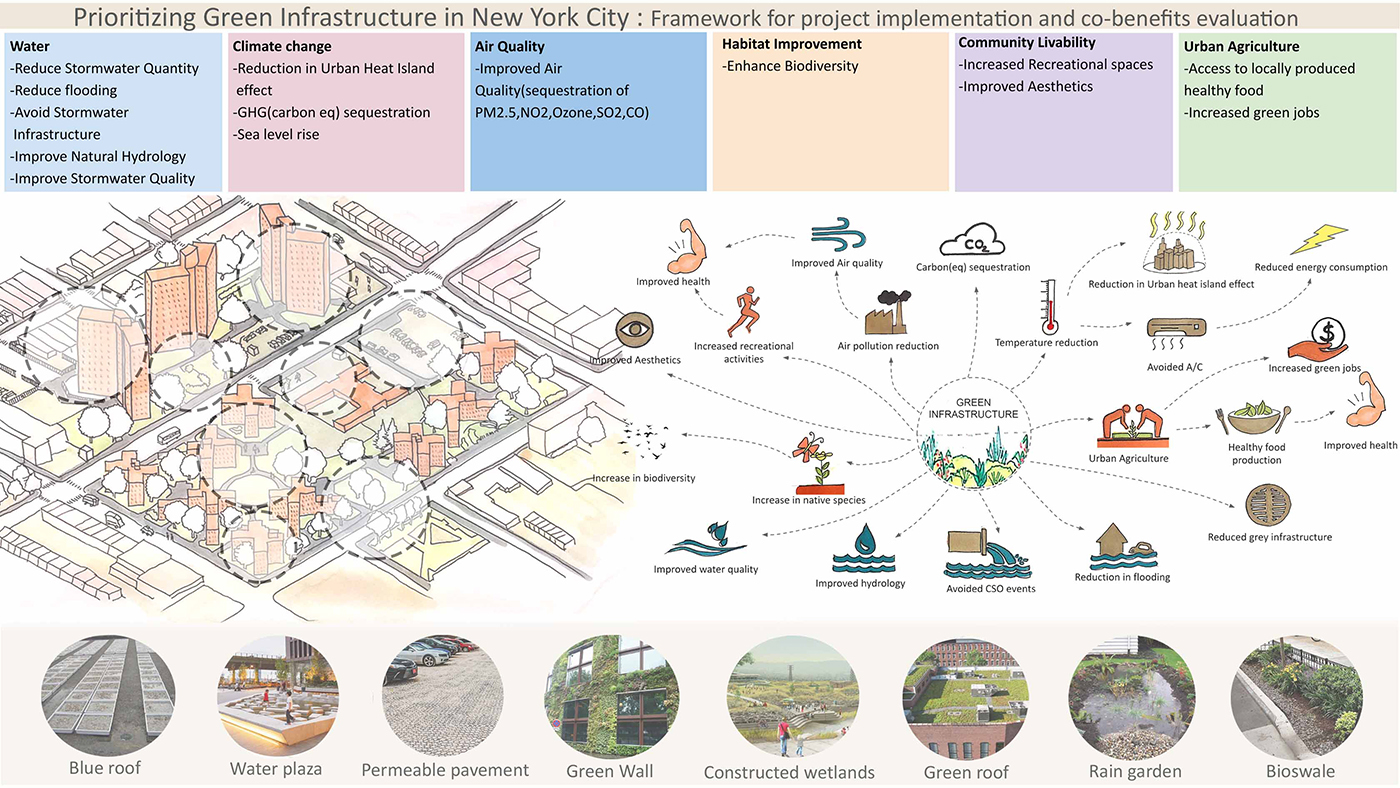
Image from “Prioritizing Green Infrastructure in New York City”
A School of Architecture project is concentrating on how communities are impacted by environmental design, with “Prioritizing Green Infrastructure in New York City” led by Pankti Mehta, MS Sustainable Environmental Systems ’20, Visiting Assistant Professor Ira Stern, and Acting Academic Coordinator Leonel Lima Ponce. Their research shows how green infrastructure initiatives—such as rain gardens and green roofs—can be looked at more broadly than just solutions to issues like stormwater runoff and the heat island effect by considering the potential benefits to an area, from improving health to enhancing local biodiversity.
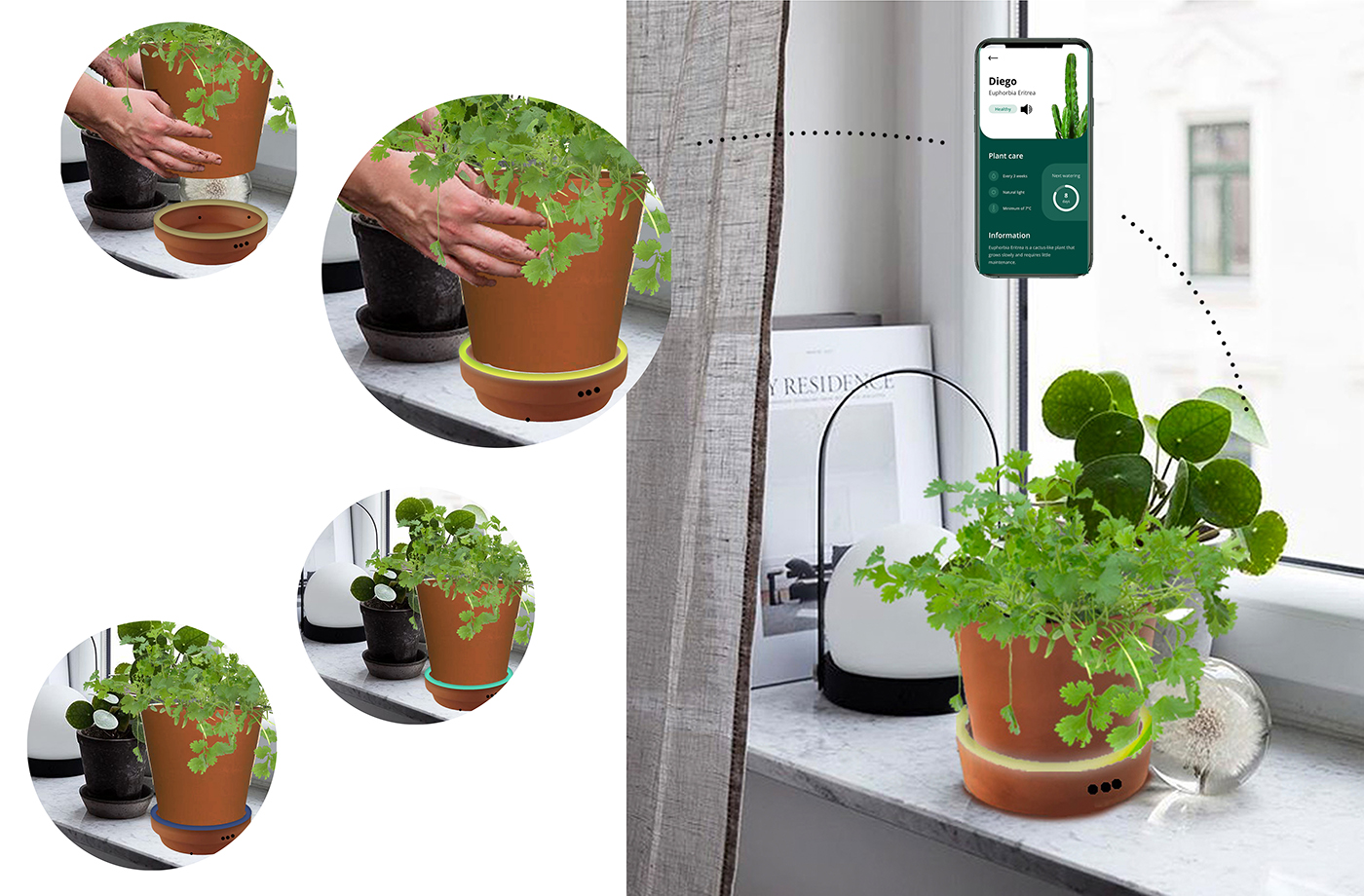
Images from “Sonic Bloom: What if Plants Could Talk to Us?”
Researchers in the School of Design are looking at ecological relationships within the home, with “Sonic Bloom: What if Plants Could Talk to Us?” using a soundscape to help plant owners track the health of their plants. Led by Anushritha Yernool Sunil, MID ’22, Archana Ravi, MS Information Experience Design ’21, and Professor of Industrial Design Debera Johnson, the project uses an app to connect users to a monitoring system that converts sensor data like soil moisture value and light conditions into sound. The interactive experience is intended to create a closer relationship between people and plants and to encourage recognition of the daily changes in nature, even on as small a scale as a houseplant.
Many other ROH projects are now online, showcasing the diversity of research and creative inquiry from Pratt’s students, faculty, staff, and alumni. As with the 2020 ROH, the event will include the second annual People’s Choice Award which visitors can now vote on, planned to be announced on April 26 alongside the other awards celebrating innovation and cutting-edge thinking at Pratt.
